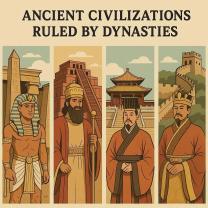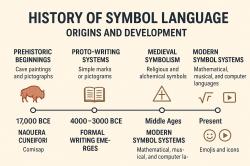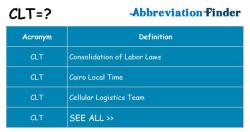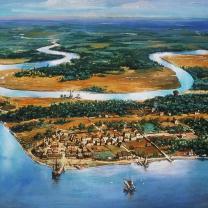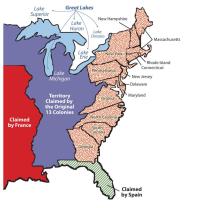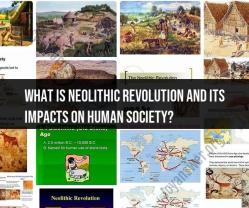What describes a primary cause of the Neolithic Revolution?
The Neolithic Revolution was a major turning point in human history, characterized by the transition from a nomadic, hunter-gatherer lifestyle to settled agriculture and the development of permanent communities. Several primary causes contributed to this significant shift:
Climate Change: Changes in global climate patterns, such as the end of the last Ice Age around 10,000 BCE, played a crucial role. Warming temperatures and the retreat of glaciers led to the expansion of more favorable environments for plant growth and the migration of game animals, making agriculture more viable.
Domestication of Plants and Animals: One of the central causes was the intentional cultivation and breeding of plants and animals. People in different regions began to experiment with cultivating wild plants and taming wild animals for their food supply. This transition from reliance on wild resources to domestication allowed for a more stable and predictable food source.
Sedentary Lifestyle: As agriculture became more successful, it led to a sedentary lifestyle. People settled in one place to tend to their crops and animals, resulting in the development of permanent villages and towns. This sedentary lifestyle marked a departure from the nomadic habits of previous hunter-gatherer societies.
Surplus Food Production: The cultivation of crops and the domestication of animals resulted in surplus food production. With a surplus, not everyone in the community needed to be directly involved in food production, which allowed for the emergence of specialized roles and occupations, such as artisans, traders, and leaders.
Population Growth: The availability of surplus food and a sedentary lifestyle led to significant population growth. Larger populations could support more complex social structures and economies, leading to the emergence of early civilizations.
Technological Advancements: The Neolithic Revolution also witnessed technological innovations. People developed tools and implements specifically designed for farming, including plows, sickles, and storage containers, which improved agricultural efficiency.
Social and Cultural Changes: The shift from a hunter-gatherer lifestyle to settled agriculture brought about profound social and cultural changes. People began to establish property rights, engage in trade, develop complex societies with hierarchies, and create organized religions.
It's important to note that the Neolithic Revolution didn't occur uniformly or simultaneously across all regions of the world. It emerged independently in various places over thousands of years, including the Fertile Crescent (modern-day Middle East), China, the Indus Valley, Mesoamerica, and other regions. These primary causes collectively transformed human societies and laid the foundation for the development of early civilizations and the modern world as we know it.
Unearthing the Neolithic Revolution: Primary Causes and Origins
The Neolithic Revolution was the transition from a hunter-gatherer lifestyle to an agricultural lifestyle. It began around 10,000 years ago in the Fertile Crescent, a region of the Middle East that includes modern-day Iraq, Iran, Syria, and Turkey. The Neolithic Revolution spread to other parts of the world over the next few thousand years.
The primary causes of the Neolithic Revolution are still debated by archaeologists and historians. However, some of the most widely accepted theories include:
- Environmental changes: The end of the last Ice Age led to a warmer climate and longer growing seasons. This made it possible for people to grow crops in a wider range of areas.
- Population growth: As the human population grew, it became more difficult to find enough food through hunting and gathering. Agriculture allowed people to produce more food in a smaller area, which supported this population growth.
- Technological advancements: The development of new tools and technologies, such as sickles and grinding stones, made it easier to cultivate crops and process food.
Seeds of Change: Understanding the Key Drivers of the Neolithic Revolution
The key drivers of the Neolithic Revolution were a combination of environmental, social, and technological factors.
Environmental factors, such as the end of the last Ice Age and the resulting climate change, made agriculture possible in more areas. Social factors, such as population growth and the need for a more reliable food supply, also contributed to the transition to agriculture. Technological advancements, such as the development of new tools and technologies, made agriculture more efficient and productive.
It is important to note that the Neolithic Revolution was not a single, unified event. It happened at different times and in different places around the world. However, the key drivers of the Neolithic Revolution were the same in all cases.
Pioneering Agriculture: A Look at the Primary Causes of the Neolithic Revolution
The primary causes of the Neolithic Revolution were the need for a more reliable food supply and the development of new technologies.
As the human population grew, it became more difficult to find enough food through hunting and gathering. Agriculture allowed people to produce more food in a smaller area, which supported this population growth.
The development of new tools and technologies, such as sickles and grinding stones, made it easier to cultivate crops and process food. This made agriculture more efficient and productive.
The Neolithic Revolution was a major turning point in human history. It led to the development of agriculture, permanent settlements, and complex societies. The Neolithic Revolution has had a lasting impact on the way we live today.
In addition to the primary causes listed above, some scholars also believe that other factors, such as religious beliefs and social organization, may have played a role in the Neolithic Revolution. However, more research is needed to understand the full range of factors that contributed to this important event in human history.


